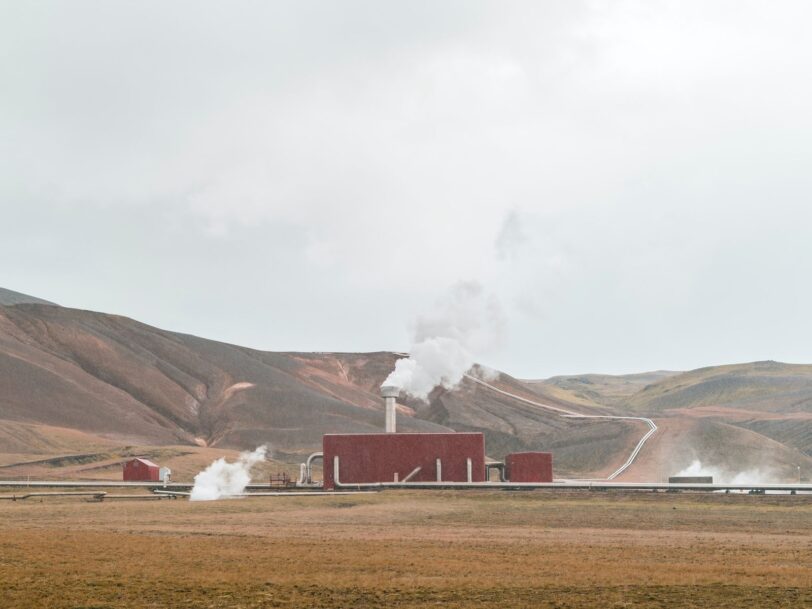How does geothermal energy work?

Renewable sources are helping to make the energy transition much more bearable. But we still need a push to reach full independence and sustainability. Only in this way can polluting sources of energy such as oil, coal or natural gas be definitively abandoned. For now we have solar power and wind power, accompanied at some distance by hydropower. But little by little we are also discovering new alternatives such as green hydrogen or geothermal energy.
Geothermal energy has always been there. But we have not always known how to use it. And there is still much to do. But, with the right technology, we will soon be able to tap into this renewable, sustainable, and best of all, inexhaustible source. Why? Geothermal energy harnesses the Earth’s heat to generate electricity.
Our planet, remember, is not homogeneous. Inside there are several layers and in them certain phenomena occur, some of them at high temperatures. More than 200ºC, in fact. And we find examples everywhere: volcanoes, geysers, hot springs…
That heat from the interior of our planet can be used, for example, to heat water naturally and thus offer heating. Or to generate electricity. And the best of all is that the combustion of any material is not necessary. It is a natural phenomenon. And its use does not generate carbon dioxide emissions.
How geothermal energy works
To take advantage of the Earth’s heat in the form of geothermal energy, it is necessary to drill to access the subsoil and introduce geothermal probes in the form of pipes. These pipes contain water or antifreeze liquid that heats up when it reaches the deepest areas and rises to high temperatures. On the surface, the geothermal plant recovers water or steam and transforms it into electrical energy. Or, in the case of heating, it leads you to cities or towns that have the appropriate infrastructure.
Depending on the depth or area of the subsoil in which the geothermal deposits are located, the geothermal energy obtained can reach different temperatures. High temperature areas exceed 150ºC. They are perfect for producing electricity using steam.
The medium temperature zones move between 100 and 150ºC. Its performance is lower. Low temperature areas reach between 30 and 100ºC and are usually used for heating, industry and spas. Finally, very low temperature areas, below 30ºC, are used for air conditioning systems with heat pumps.
Iceland, the pioneer in using the heat of the subsoil
To check the viability of geothermal energy, you only have to take a look at Iceland. A country that has become known in recent years for very characteristic natural spaces in which the spectacular geysers abound. Precisely, thanks to the geological characteristics of Iceland, this volcanic island has an infinite source to heat water and to generate electricity. For a population of 350,000 inhabitants.
According to data from the Icelandic Government, 85% of its energy sources come from renewable sources. And, of the total of these renewable sources, in 2016, 65% came from geothermal energy. The other 20% came from hydropower and the remaining 15% from oil, especially for the transportation sector. Another interesting fact: 85% of Icelandic homes have geothermal heating.
What’s more: the first geothermal power plant in the world capable of generating electricity is in Iceland. It is located north of Grindavík, near the country’s capital, Reykjavík. Its name is Svartsengi, which in Icelandic means black meadow. It was completed in 1976 and produces hot water and electricity. Something not very frequent. Its production capacity is 75 MWe (electrical megawatts) and 150 MWt (thermal megawatts). And, in a year, it can generate 629 gigawatt hours.
Geothermal in the world
Although the high temperatures inside the Earth have always been there, it was not until the beginning of the 20th century that humans began to pay attention to it. The first geothermal electricity production plant dates back to 1913. But it was not until the 1950s that geothermal power plants began to be built in different parts of the planet. And, especially, as a result of the oil crisis, from 1973.
There are geothermal power plants in the Philippines, Nicaragua, El Salvador, Iceland, Costa Rica, Kenya, New Zealand and Indonesia. Also in countries like the United States, Australia, Germany, Italy, Russia, Turkey or the Netherlands. However, their installed capacity is not equally important in all of them. With data from 2016, the list of countries with installed geothermal energy capacity was led by the United States (+2,500 MW), the Philippines (+1,900 MW) and Indonesia (+1,500 MW).
However, despite the very favorable characteristics of geothermal energy, it only accounts for 1% of renewable sources worldwide. A list headed by solar energy and wind energy, followed at some distance by hydraulics. The main reason is that it is not possible to install a geothermal plant just anywhere. As we saw at the beginning of this article, not all geothermal deposits or areas reach the same temperature. And, to generate electricity, only those that reach 150 ºC or more are useful. Hence its limitation to volcanic areas such as Iceland or New Zealand.